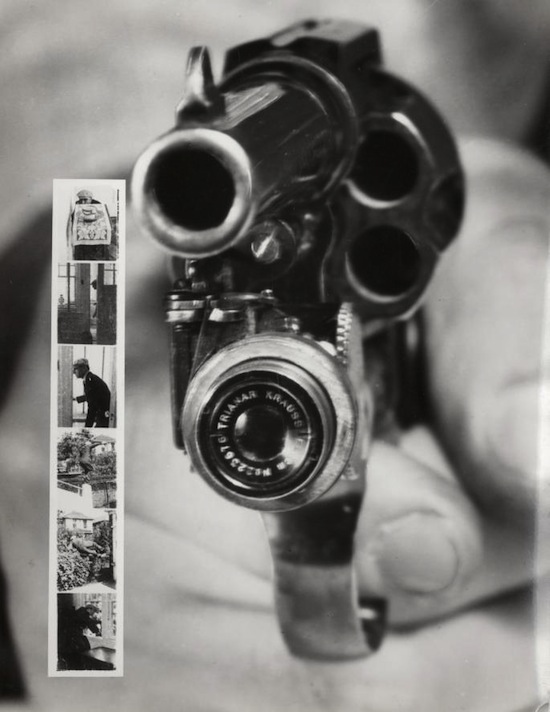A Colt 38 Camera Revolver
In 1938, this curious device made its way through the streets of New York: A Colt 38 revolver which, when its trigger was pulled, simultaneously snapped a picture and fired a bullet. Shoot first and figure out later who it was.
C.I.A. single-shot gun-camera (1966)
The Stinger is a single-shot re-loadable .22 magnum pen-gun, perhaps the single most popular weapon of the C.I.A. In 1966 the Stinger has been "swallowed" by an Asahi Pentax 35mm SLR and properly cocked via camera’s film advance lever. It shot by shutter release button breaking the lens elements in front of it. James Bond Inspired I gather, not the other way around.
The Revolver Photographique (Thompson’s Revolver Camera) was manufacturer in Paris, France in 1862. Although it does not shoot bullets it would however make your subjects think twice about a close up.
“Designed by Thompson. Brass pistol-shaped camera with scope, wooden pistol grip, but no barrel. Takes four 23mm diameter exposures in rapid succession on a 7.5 cm circular wet plate. Ground glass focusing through the scope which is above the cylindrical plate chamber. Petzval f2/40mm lens, single speed rotary shutter behind the lens shutter. The lens is raised and sighted through to focus, then dropped into place in front of the plate, automatically releasing the shutter. The circular plate was then rotated ¼ turn and was ready for the next exposure.”
Marey’s Photographic Gun
Étienne-Jules Marey was a french scientist and pioneer of the history of film who studied movement and aviation through photography in the late 1800’s. In 1882, he made this chronophotographic gun, which was capable of shooting 12 consecutive frames per second.
An image from Marey's camera gun:
You have read this article camera gun /
Étienne-Jules Marey /
Gun Camera /
Revolver Camera /
Revolver Photographique
with the title Étienne-Jules Marey. You can bookmark this page URL https://nikiinwonderland.blogspot.com/2011/06/gun-cameras.html. Thanks!



















